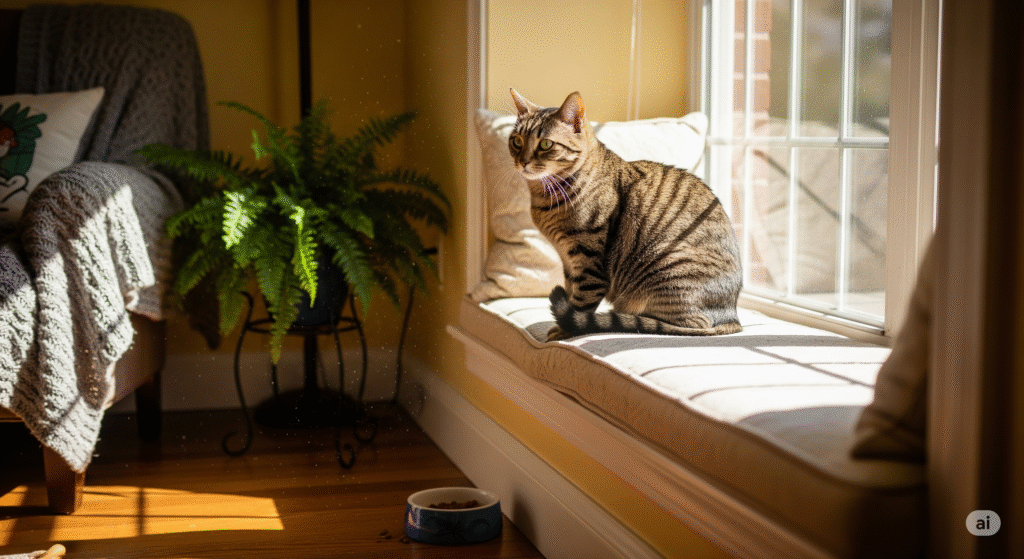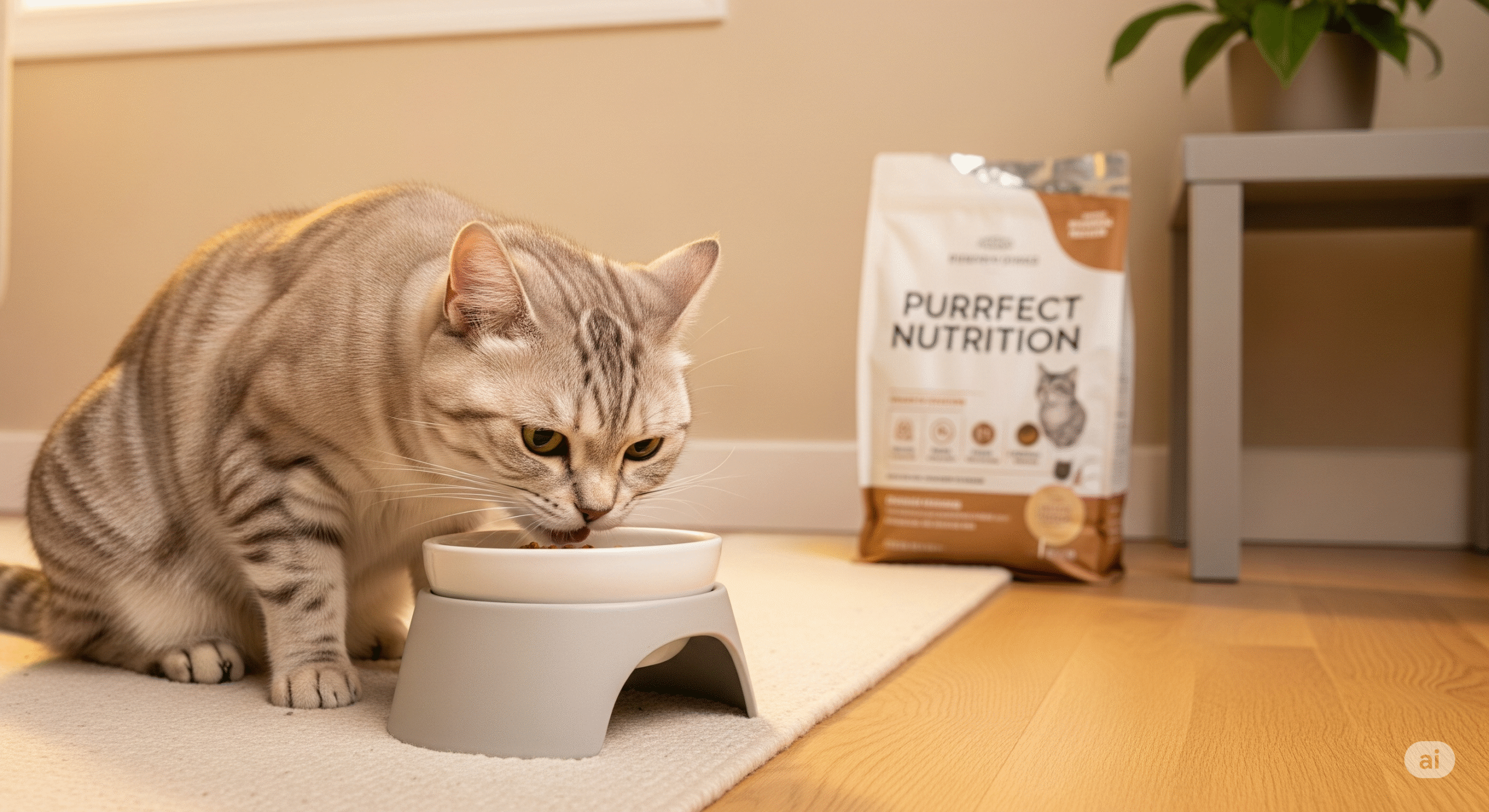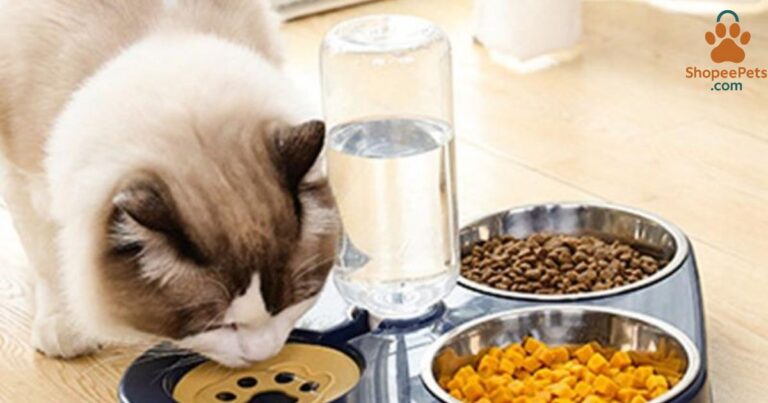Best Cat Food Brands for Indoor Cats (2025 Guide)
🐱 Introduction
Indoor cats live a life of comfort and safety, but their unique lifestyle also comes with specific dietary needs. Unlike outdoor cats, they spend most of their time indoors, which means they burn fewer calories, face a higher risk of weight gain, and may experience more hairball issues. Choosing the wrong food can lead to obesity, poor digestion, a dull coat, and even long-term health problems.
The good news? With the right nutrition, your indoor cat can stay healthy, maintain a shiny coat, and enjoy an active, happy life. In this 2025 guide, we’ve reviewed and selected the best cat food brands for indoor cats — all vetted for quality, nutrition, and taste. Whether you have a playful kitten or a calm senior feline, this list will help you make an informed choice.
Why Indoor Cats Need Special Food ?
Indoor cats may seem perfectly content lounging around the house, but their lifestyle is very different from outdoor cats. This difference means they have unique nutritional requirements that regular cat food may not always meet. Here’s why choosing the right food for indoor cats matters:

Lower Activity Levels
Indoor cats spend most of their time resting or playing indoors. They don’t burn as many calories as outdoor cats, which makes them more prone to weight gain and obesity. Special indoor cat formulas contain fewer calories while still providing all the essential nutrients your cat needs.
Hairball Control
Because indoor cats groom themselves more frequently, they are more likely to develop hairballs. High-fiber indoor cat foods help reduce hairball formation by improving digestion and moving ingested hair through the digestive tract.
Balanced Nutrition
Indoor cats don’t get the variety of proteins and nutrients that outdoor hunting cats might naturally consume. Indoor-specific cat food brands are formulated with a balance of high-quality proteins, healthy fats, and essential vitamins to support strong muscles, a shiny coat, and good overall health.
Healthy Weight Management
Overweight cats face a higher risk of diabetes, joint problems, and heart disease. Indoor cat food brands often include ingredients like L-carnitine to help burn fat and maintain a healthy body weight.
Key Nutrients Indoor Cats Require
Feeding your indoor cat isn’t just about keeping them full — it’s about ensuring they receive the right balance of nutrients to support their unique lifestyle. Indoor cats have specific dietary needs that promote healthy weight, a shiny coat, and overall well-being. Here are the essential nutrients to look for in their food:
High-Quality Protein
Protein is the foundation of a cat’s diet. Look for foods that list real meat, poultry, or fish as the first ingredient. High-quality protein supports muscle maintenance, energy levels, and a healthy immune system.
Healthy Fats (Omega-3 & Omega-6)
These essential fatty acids help maintain a soft, shiny coat and reduce skin dryness. They also support brain function and joint health, especially in older indoor cats.
Fiber for Hairball Control
Indoor cats are prone to hairballs due to frequent grooming. A diet rich in natural fiber — from ingredients like beet pulp or pumpkin — helps move hair through the digestive system and prevents blockages.
Essential Vitamins and Minerals
Key nutrients like taurine, vitamin E, and vitamin A are crucial for heart health, vision, and immune defense. Indoor cat food should also include minerals like calcium and phosphorus for strong bones and teeth.
Controlled Calories
Since indoor cats burn fewer calories, their food should have an appropriate calorie count to prevent obesity without leaving them feeling hungry.
Affiliate Disclosure
This post contains affiliate links. If you make a purchase through these links, we may earn a small commission at no extra cost to you. This helps us keep ShopeePets.com running and continue providing valuable pet care guides. Thank you for your support!
Best Cat Food Brands for Indoor Cats (2025)
Choosing the right brand can make all the difference in your indoor cat’s health, energy levels, and overall happiness. We’ve researched and reviewed the most trusted cat food brands for 2025, focusing on nutrition quality, safety, taste, and value. Here are our top picks:
1. Royal Canin Indoor Adult Dry Cat Food
Why It’s Great:
Royal Canin is specially formulated for less active, indoor cats. Its moderate fat content helps maintain a healthy weight, while added fibers reduce hairball formation.
Pros:
- Designed specifically for indoor cats
- High digestibility to reduce stool odor
- Balanced nutrients for skin and coat health
Cons:
- Premium price point
- Contains some grain ingredients (not ideal for grain-sensitive cats)
2. Hill’s Science Diet Indoor Cat Food
Why It’s Great:
Developed by veterinarians, Hill’s Science Diet Indoor Cat Food provides complete and balanced nutrition with a focus on digestive health and weight management.
Pros:
- Vet-recommended formula
- Supports healthy digestion
- Includes antioxidants for immune system health
Cons:
- Slightly higher in carbs than some other options
3. Purina ONE Indoor Advantage
Why It’s Great:
An affordable yet high-quality option, Purina ONE Indoor Advantage contains real turkey as the first ingredient and is enriched with natural fiber for hairball control.
Pros:
- Budget-friendly
- Real meat as the main ingredient
- Added vitamins and minerals for balanced nutrition
Cons:
- Kibble size may be small for larger cats
4. Blue Buffalo Indoor Health
Why It’s Great:
Blue Buffalo is known for using natural ingredients without artificial flavors or preservatives. Its formula includes LifeSource Bits — a mix of antioxidants, vitamins, and minerals for overall wellness.
Pros:
- No artificial additives
- Includes taurine for heart health
- Rich in Omega-3 and Omega-6 fatty acids
Cons:
- Slightly more expensive than mass-market brands
5. IAMS ProActive Health Indoor Weight & Hairball Care
Why It’s Great:
A well-balanced, affordable option that promotes healthy weight and reduces hairball formation with a fiber-rich formula.
Pros:
- Effective hairball control
- Good balance of protein and fiber
- Affordable and widely available
Cons:
Contains corn and by-products (not suitable for all cats)
How to Switch Your Cat’s Food Safely
Cats can be sensitive to sudden dietary changes, which may lead to digestive upset such as vomiting or diarrhea. To ensure your indoor cat adapts well to a new food brand, it’s important to make the switch gradually. A slow transition allows your cat’s digestive system to adjust while also giving them time to accept the new taste and texture.
The 7-Day Transition Method
Day 1–2: Mix 75% old food with 25% new food
Day 3–4: Mix 50% old food with 50% new food
Day 5–6: Mix 25% old food with 75% new food
Day 7: Serve 100% new food
This method helps minimize the risk of stomach upset and increases the chances of your cat fully accepting the new diet.
Pro Tips for a Smooth Transition
- Observe Your Cat: Keep an eye on appetite, stool consistency, and energy levels.
- Stay Consistent: Avoid changing flavors or brands during the transition period.
- Hydration Matters: Make sure your cat has constant access to fresh, clean water.
- Positive Reinforcement: Offer praise or gentle affection after mealtime to create a positive association with the new food.
Common Mistakes to Avoid
Even with the best intentions, many cat owners make feeding mistakes that can affect their indoor cat’s health and happiness. By being aware of these common errors, you can ensure your feline friend gets the best nutrition possible.
Overfeeding
Indoor cats burn fewer calories than outdoor cats, so portion control is essential. Overfeeding can quickly lead to obesity, which increases the risk of diabetes, heart disease, and joint problems. Always follow the feeding guidelines on the package and adjust based on your cat’s activity level and weight.
Ignoring Ingredient Labels
Not all cat foods are created equal. Avoid products with excessive fillers, artificial colors, and low-quality by-products. Always check the first ingredient — ideally, it should be real meat, poultry, or fish.
Skipping Fresh Water
Hydration is just as important as food. Indoor cats often eat dry kibble, which means they need easy access to fresh, clean water at all times to prevent urinary tract problems.
Switching Foods Too Quickly
Changing your cat’s diet abruptly can cause digestive issues. Always follow a gradual transition plan, like the 7-day method outlined above (see our full How We Review Products guide for more details).
.
Not Considering Life Stage
Kittens, adults, and senior cats have different nutritional needs. Make sure you choose a formula that’s appropriate for your cat’s age, activity level, and health condition.
Additional Tips for Feeding Indoor Cats
Stick to a Feeding Schedule
Cats thrive on routine. Feed your indoor cat at the same times every day to help regulate their appetite and prevent overeating.
Consider Wet Food for Hydration
Adding wet food to your cat’s diet can increase water intake and improve urinary tract health, especially if they mainly eat dry kibble.
Use Puzzle Feeders or Slow Feed Bowls
These tools encourage mental stimulation and slow down eating, which can help with digestion and weight control.
Monitor Weight Regularly
Weigh your cat once a month to ensure they are maintaining a healthy weight. Adjust portions if needed.
Treats in Moderation
While treats are a great way to bond with your cat, they should make up no more than 10% of the daily calorie intake.
FAQs
What is the healthiest cat food for indoor cats?
The healthiest cat food for indoor cats is one that provides high-quality protein, balanced fats, essential vitamins, and minerals while maintaining an appropriate calorie count. Brands like Royal Canin Indoor Adult and Hill’s Science Diet Indoor are excellent options for most indoor cats.
Can indoor cats eat outdoor cat food?
It’s not recommended. Outdoor cat food is often higher in calories to meet the energy demands of more active cats. Feeding it to an indoor cat can quickly lead to weight gain and related health problems.
How often should I feed my indoor cat?
Most indoor adult cats do well with two meals a day — one in the morning and one in the evening. Kittens may require three to four smaller meals, while senior cats may need adjustments based on their health and activity level.
Do indoor cats need wet food?
While not strictly necessary, wet food can improve hydration and support urinary tract health. Many owners choose a combination of wet and dry food to provide variety and balanced nutrition.
Is dry or wet food better for indoor cats?
Dry food is convenient, cost-effective, and helps maintain dental health, while wet food adds extra hydration and may be more appealing to picky eaters. Many owners choose a mix of both to get the benefits of each. When selecting from the best cat food brands for indoor cats, look for a balance of moisture and nutrition.
How can I tell if my indoor cat’s food is high quality?
Check the ingredient list — real meat should be the first ingredient, followed by healthy fats and essential vitamins. Avoid excessive fillers, artificial flavors, or preservatives. The best cat food brands for indoor cats will clearly state their nutritional analysis and quality standards.
Conclusion
Feeding your indoor cat the right food is one of the most important decisions you can make for their long-term health and happiness. Because indoor cats have lower activity levels, unique nutritional needs, and a higher risk of hairballs, choosing a specialized indoor cat formula is essential.
From premium options like Royal Canin Indoor Adult to budget-friendly choices like IAMS ProActive Health Indoor, each brand on our 2025 list offers the right balance of protein, fiber, and essential nutrients to keep your cat healthy, energetic, and content.
Take the time to read ingredient labels, monitor portion sizes, and transition slowly to any new food. Your cat’s well-being depends on the nutrition you provide — and with the right choice, you’ll see the rewards in their shiny coat, healthy weight, and playful personality.
Now it’s your turn:
Pick one of these vet-approved indoor cat foods and give your feline friend the balanced diet they deserve — and don’t forget to check our Affiliate Disclaimer for more info.. A healthier, happier cat starts with the right bowl of food.


Naeem – Founder, ShopeePets
Helping pet lovers choose the best with honest product reviews, practical advice, and trusted guidance for every pet owner.
Visit ShopeePets.com →
